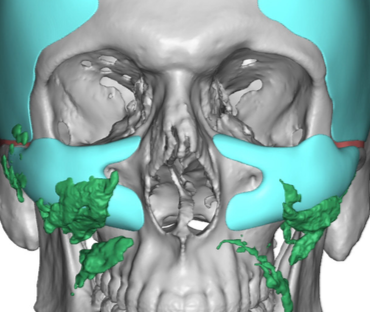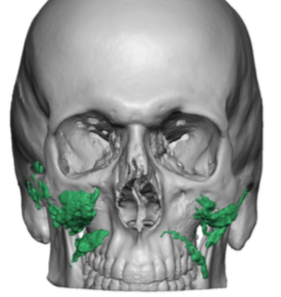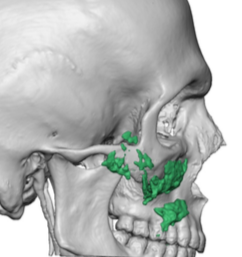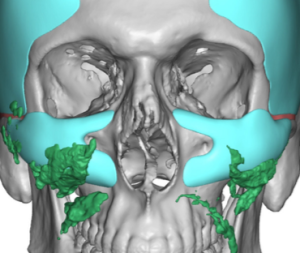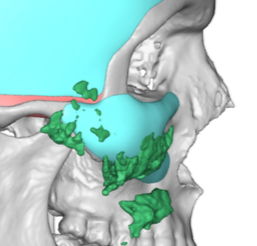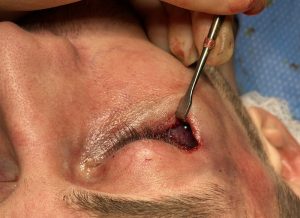Background: Midface deficiencies are an interesting area of the face to augment as it is one of the few facial areas that has a significant concave shape to it. It also poses some anatomic issues with the prominent location of the infraorbital nerve. Traditionally midface augmentation was perceived as only being able to be effectively done by bone based procedures such as various Lefort osteotomies. But with a good occlusal relationship the only option are implants.
Midface implants have been historically thought of as standard shapes such as cheeks, infraorbital rim and paranasal-premaxillary styles. Patching these standard implants together is one approach to augment the midface but, in reality, creates an incomplete and uncontrolled augmentation result. Today the concept of a custom midface implant is the ideal treatment approach with a more complete and unified bony surface area coverage as well as preoperative control of implant thicknesses.
Many midface deficient patients receive some form of injectable volume augmentation albeit synthetic filler or fat. And while these treatments can produce positive improvements the effect is neither optimal or permanent. But their initial use can provide valuable information for custom midface implant designing, identifying the injectable augmentation locations and the volumes that were injected.
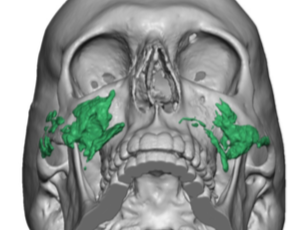


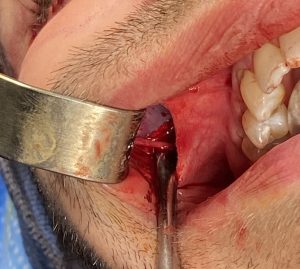
Custom midface implants can provide an augmentation effect that supplants that of injectable fillers. They achieve this effect by overlaying most of the bony surface of the anterior midface from the infraorbital rim down as aesthetically needed. Their shape still follows the natural superior convex and inferior concave shape to the midface in varying amounts. They should almost always be placed with dual incisional visualization that assures the integrity of the infraorbital nerve.
Case Highlights:
1) Injectable fillers can be used to treat a midface deficiency but achieving a good augmentation effect may take considerable volume.
2) A 3D CT scan can be used to see hydroxyapatite fillers which can help in the design of a custom midface implant by their location and volume.
3) Placing a custom midface implant that encircles the infraorbital nerve and vertically augments the infraorbital rim requires a combined intraoral and lower eyelid incisions for proper implant placement.
Dr. Barry Eppley
Indianapolis, Indiana

